Diesel Service Report, May 31st, 2020
Due to the shut-down of the museum for the past few months, no weekly update reports were issued. The crew is back to work again, and the following report summarizes the status of many of the Diesel Locomotives.
SP3100
Prior to the shut-down, the locomotive had been taken out of service for replacing the #2-wheel set. That work has been completed and the replacement wheel set appears to be working correctly.
The cooling system has been a source of problems ever since the locomotive arrived at the museum in the early 1990’s. At the time, we should have addressed the issues but didn’t know enough about it or how to troubleshoot it. Subsequently the problem only got worse over the years. Finally, the problem became so bad that it couldn’t be ignored any longer. Water pressure going to the engine should have been about 10psi at idle and it was almost zero. The suction side of the water pump should have been less than minus 5 psi but it essentially pegged the vacuum meter. The decision was then made to remove the oil cooler and have it cleaned. When removed, it was found to be about 90% plugged with rust and corrosion scale from the cooling system. And the rust was the result of not using properly treated water for many years. Including prior to its coming to the museum.
After a lot of work on the cooling system, especially by Carl Pickus, Richard Berk, and John Salvini, the locomotive is back in service. The one risk that we now have is that the pressure inside the Diesel engine is higher than it has been for an awfully long time. We could have seals that will start leaking under the higher pressures. Obviously, we hope not, but it is a risk we are aware of.
SP1474
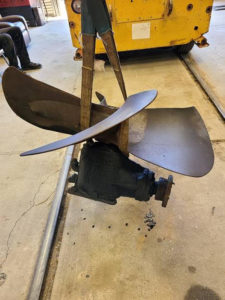 About two months ago, a loud clunking noise was heard coming from the cooling fan compartment. It sounded like the gears in the gear case were self-destructing. The locomotive was immediately taken out of service. An inspection revealed that there was excess play in the drive shaft going into the gear box. Fortunately, we have detailed documents about the gear box and were able to determine the most probable cause.
About two months ago, a loud clunking noise was heard coming from the cooling fan compartment. It sounded like the gears in the gear case were self-destructing. The locomotive was immediately taken out of service. An inspection revealed that there was excess play in the drive shaft going into the gear box. Fortunately, we have detailed documents about the gear box and were able to determine the most probable cause.
The gears are a straight cut 45-degree bevel. The two gears mating provide a 90-degree angle of movement. The drive shaft enters the gear box horizontally and the fan drive exists the gear box vertically. The fan has a lot of mass to it so if there is any play at all between the two gears then they will clang back and forth against each other. Carl estimated that the play was about .012” and the book said it should be .003” down to .000”. In other words, there should be essentially zero play between the two gears. The manual described how the gear lash was adjusted using various thicknesses of shims. Carl was able to partially disassemble the gear box to gain access to the shims. He removed one shim that he felt was equal to the extra lash seen previously and reassembled the gear case. The extra play was almost totally gone.
The other questionable portion of the systems was the flexible coupler in the drive shaft. Richard disassembled it for inspection. It looked exceptionally good. It was then serviced and put back together. Carl, Richard, John and Frank Kunsaitis then reinstalled the fan assembly and started the engine. The original loud clunking noise was gone. The picture below shows the fan and gear box after the assembly was lifted out through the hood of the locomotive. Frank, Carl, Richard, and John completed the project in about two weeks.
USAF 7441
This little 45 ton GE switcher has been a real workhorse at the museum since the late 1980’s. It has performed well until the last few years. But the paint has been peeling, rust was starting to form on a lot of the sheet metal and both engines were becoming difficult to start and operate. It was time to start giving it some attention. Tom Platten, along with assistance from Tim Johnson and Carl Pickus, started needle gunning the old paint and rust off. Once an area was clean, Carl sprayed primer paint on it to keep the rust from coming back. Tim and Tom worked inside the cab removing old tar like material that was applied many years ago prior to being painted. That tar material, in some cases, easily fell right off. In other areas it was almost impossible to get off. The painting preparation in the cab and on the outside sheet metal is still a work in process.
The two Cummins H series early 1940’s Diesel engines, however, provided unique problems due to the infamous Single Disc Fuel Pumps. But to be fair, they have worked for 30 years with no maintenance so its not surprising that we needed to “tune them up”.
The first problem, which was noticed about 15 years ago, was that fuel was pouring out of a vent hole in the fuel pump housing. It shouldn’t have done that. But we didn’t know what was causing it, so the decision was made to just route that fuel back to the fuel tank. Now we know that it was most probably caused by scored distributor discs. These discs are used to route fuel into the injectors and as the discs rotate on each other. Openings in the discs line up for fuel to be supplied to the injectors at the proper time. The problem is that if these discs become worn, or scored, then that leaked fuel will drop into the cavity of the pump. That’s what both engines were doing. The solution was to remove the discs and lap them perfectly flat again.
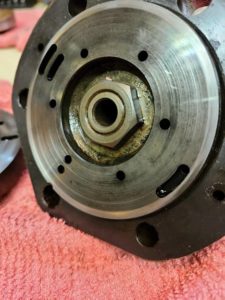
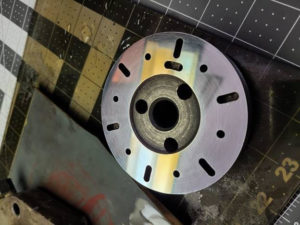
This first picture is of a disc that was removed from the locomotive. Notice the wear marks.
For perfect sealing, both discs should be absolutely flat with no scratches. After several hours of lapping with 1200 grit abrasive wet/dry paper on a flat granite plate, the discs start to look like mirrors like this below. Even then there are fine scratch marks left from being too aggressive with too coarse of a grit during the initial states of lapping.
It’s a learning process that, if done wrong, can take a lot of time to correct.
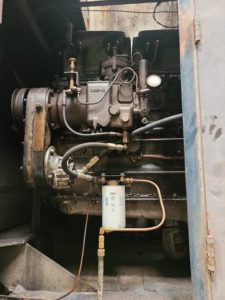 The other problem with the engines was that both had a habit of going full speed right after start-up. And they would do that for almost a minute before they would settle down to the correct idle RPM. Internet research indicated that others have had this problem for a long time and that it is caused by air being sucked into the high-pressure gear pump. That air somehow results in the governor feeding too much fuel to the injectors until the air is gone from the fuel line. After more research and making contact with another person working on the same model fuel pumps, it was decided that the most likely source of air getting into the fuel was due to a faulty seal on the fuel pump drive shaft. That seal was replaced on the #2 engine, the same engine that has the newly lapped discs installed. That engine is now ready to be bled to remove entrapped air and then be started. We are now ready to do the same repairs on the #1 engine. Hopefully, the issues have been taken care of, but caution is suggested.
The other problem with the engines was that both had a habit of going full speed right after start-up. And they would do that for almost a minute before they would settle down to the correct idle RPM. Internet research indicated that others have had this problem for a long time and that it is caused by air being sucked into the high-pressure gear pump. That air somehow results in the governor feeding too much fuel to the injectors until the air is gone from the fuel line. After more research and making contact with another person working on the same model fuel pumps, it was decided that the most likely source of air getting into the fuel was due to a faulty seal on the fuel pump drive shaft. That seal was replaced on the #2 engine, the same engine that has the newly lapped discs installed. That engine is now ready to be bled to remove entrapped air and then be started. We are now ready to do the same repairs on the #1 engine. Hopefully, the issues have been taken care of, but caution is suggested.
This is a picture of the infamous Cummins Single Disc Fuel Pump.
USAF 1601
The locomotive was placed over the inspection pit to gain access to the traction motor armature covers. Two of the traction motors were isolated many years ago, prior to coming to the museum. Our inspection revealed that the commutator segments on one of those motors is severely damaged. It was most probably caused by allowing the brushes to wear down too far which allowed arcing to take place between the brush wires, the brush spring, and/or the brush holders and the copper segments of the commutator. The damage to the commutator segments is very severe. The other disabled traction motor has some minor wear issues with the commutator but appears that it is easily repairable. What is odd is that there is a portion of the armature shaft by the commutator that appears to be missing. It is called a string band. It is nothing more that string that is wrapped around an area next to the commutator and then covered with epoxy. We’ve never seen this missing before so will need to refer to manuals to see if there is supposed to be a string band there. If so, it is easily replaced. There is no real option to this problem other than to remove the two failed motors. That provides a problem because once the motors are removed the locomotive cannot be moved. There are options such as making braces to install in place of the removed traction motors, but we have not decided yet how to proceed. In the meantime, the locomotive is functional but only at half the pulling power that it would have if all four traction motors were working.
SF560
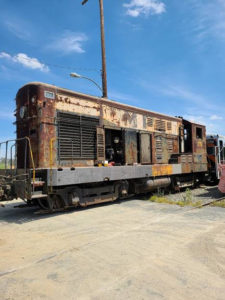 This is our exceedingly rare Fairbanks Morse H12-44M switcher locomotive. Only one other one, in Frisco Texas, is known to exist.
This is our exceedingly rare Fairbanks Morse H12-44M switcher locomotive. Only one other one, in Frisco Texas, is known to exist.
The last time it was started was in the early 1990’s. At the time it had issues with blowing oil out the stack and an overheating axle journal bearing. At the time, we just weren’t weren’t ready to deal with the problems. Now, we feel the time is right to consider restoring the locomotive. The appearance of it is misleading. The metal work is in exceptionally good shape so from a cosmetic point of view, it would take very little to refurbish the sheet metal and have it painted. The problem is with the incredibly unique dual opposed piston 2 cycle engine.
Our plan is to start the locomotive and evaluate it to see if it is something that we can refurbish and maintain. If not, then we will have other priorities to attend to. But if we think we have a good chance of succeeding with the restoration then we will continue.
To get ready for the engine starting, a set of batteries was installed. Then the 30 year old fuel was pumped and drained out of the fuel tank and about 100 gallons of fresh fuel was pumped into the tank. New fuel filters were installed, and the fuel pump operated for about 30 minutes to dilute any remaining old fuel in the system. The next step will be to hook up an electric oil pump to pump oil into the engine to prelube it before attempting to start it. A check will be made to ensure the injection pump racks are free and then we will try to start it. That is scheduled for 10am June 13th. We are pretty confident it will start.
However, the major problem long term is its history of spitting black lube oil out the stack. When it does that, it ruins clothes that it lands on and it is very difficult to wash out. Unfortunately, this problem is well known with Fairbanks engines. The additional problem is that it is extremely expensive to have the engine overhauled. It must be done by Fairbanks Field Service personnel and the price can be in excess of $100,000. Our hope is that the majority of the spitting oil problem is the result of the engine being operated at essentially idle RPM for 17 years in a scrap yard. We expect that the complete exhaust system is coated with thick oil and carbon. The quickest way to clean that all out is to operate the engine at full load for a number of hours. That is done using a load bank that will absorb all of the electrical power that the main generator can produce. The load bank is a large array of heavy-duty grid resistors and a cooling fan to dissipate the generated heat. This shows the load bank that being refurbished. The grid resistors, propped up next to it on the ground, are ready to be installed.
After the locomotive exhaust system has been “burned out” by using the load bank, we will again evaluate it to see if the blowing oil is too much for public use. Of course, we will have the option of just accepting the spitting oil and only use the locomotive on rare controlled occasions. It is a very rare locomotive so we really want it to be available for the public to see and listen to the unique sound that it makes.
Dave Althaus

